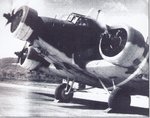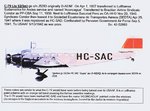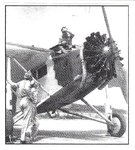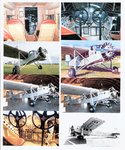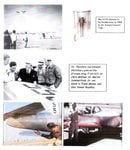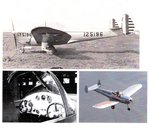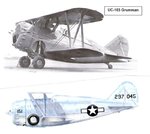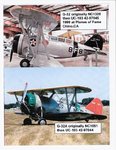hawkeye2an
Staff Sergeant
The C-79 was a Brazilian-registered Junkers Ju-52/3m, c/n 5283, registration PP-CBA, named "Aconcagua" of Sindicato Condor. Aircraft was impressed and transferred to the USAAF in May 1942, serialed 42-52883 and assigned to the 20th Troop Carrier Squadron. Aircraft was based in Panama, and was disposed of in December 1943; transferred to the US Public Roads Administration in Costa Rica. Aircraft later registered TI-60.
Prior to her life in South America, she carried German civil registration D-AENF. She was assigned to the Panama Air Depot (exact date of transfer was 9 May 42) and based at Albrook Fld, Canal Zone. Was transferred to Aruba on 9 July 42; apparently back to Panama 0n 25 November 42; and to Salinas-Equador 21 April 43. Records show aircraft was condemned on 20 Dec 43 or 7 Dec 44
Also reported to be used by the 49th SrG, USAAC.
It was involved in a taxiing accident in Trinidad on 9 June, 1943.
The aircraft was refitted with P&W R-1690 Hornets in modified DC-2 cowlings and the props look to be replacements too. The air-brakes were replaced with hydraulic brakes, a tail wheel was installed to replace the skid. All instruments and radio were replaced with U.S. equipment.
The aircraft was reputed to have been flown with no markings on "supply drops" to German subs, dropping ordinance instead.
Sources:
"U.S. Military Aircraft Designations and Serials since 1909" compiled by John M. Andrade
Wings Palette – color plates of German and Ecuador markings
American Aviation Historical Society Vol 37 # 3 Fall 1992
'ALAE SUPRA CANALEM,Wings over the Canal' the Sixth Air Force and the Antilles Air Command, by Dan Hagedorn
Prior to her life in South America, she carried German civil registration D-AENF. She was assigned to the Panama Air Depot (exact date of transfer was 9 May 42) and based at Albrook Fld, Canal Zone. Was transferred to Aruba on 9 July 42; apparently back to Panama 0n 25 November 42; and to Salinas-Equador 21 April 43. Records show aircraft was condemned on 20 Dec 43 or 7 Dec 44
Also reported to be used by the 49th SrG, USAAC.
It was involved in a taxiing accident in Trinidad on 9 June, 1943.
The aircraft was refitted with P&W R-1690 Hornets in modified DC-2 cowlings and the props look to be replacements too. The air-brakes were replaced with hydraulic brakes, a tail wheel was installed to replace the skid. All instruments and radio were replaced with U.S. equipment.
The aircraft was reputed to have been flown with no markings on "supply drops" to German subs, dropping ordinance instead.
Sources:
"U.S. Military Aircraft Designations and Serials since 1909" compiled by John M. Andrade
Wings Palette – color plates of German and Ecuador markings
American Aviation Historical Society Vol 37 # 3 Fall 1992
'ALAE SUPRA CANALEM,Wings over the Canal' the Sixth Air Force and the Antilles Air Command, by Dan Hagedorn
Last edited:

